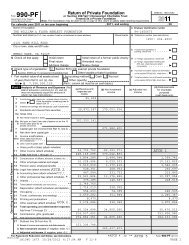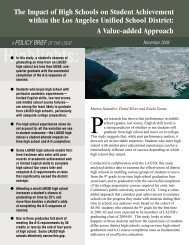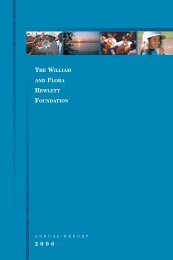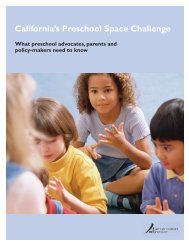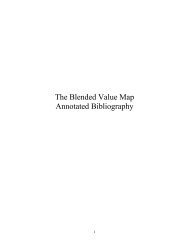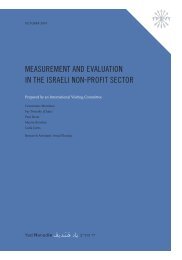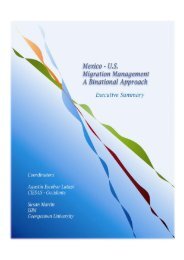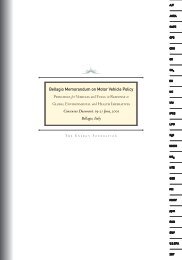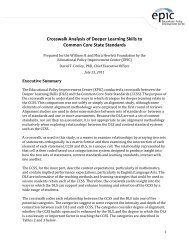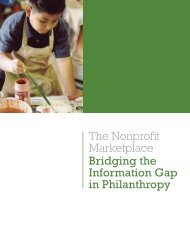EDUCATION FOR LIFE AND WORK - Hewlett Foundation
EDUCATION FOR LIFE AND WORK - Hewlett Foundation
EDUCATION FOR LIFE AND WORK - Hewlett Foundation
You also want an ePaper? Increase the reach of your titles
YUMPU automatically turns print PDFs into web optimized ePapers that Google loves.
Education for Life and Work: Developing Transferable Knowledge and Skills in the 21st Century<br />
12 <strong>EDUCATION</strong> <strong>FOR</strong> <strong>LIFE</strong> <strong>AND</strong> <strong>WORK</strong><br />
on a plethora of different constructs in the cognitive, intrapersonal, and<br />
interpersonal domains. Our taxonomy offers a useful starting point, but<br />
further research is needed to more carefully organize, align, and define these<br />
constructs. Second, there are psychometric challenges. Progress has been<br />
made in assessing a range of simple and complex cognitive competencies,<br />
yet much further research is needed to develop assessments of intrapersonal<br />
and interpersonal competencies. Such research should initially focus on<br />
developing assessments for research purposes, and later on assessments<br />
for formative purposes. If these efforts are successful, then summative assessments<br />
of intrapersonal and interpersonal competencies could possibly<br />
be developed for later use in educational settings. Experiences during the<br />
1980s and 1990s in the development and implementation of performance<br />
assessments and assessments with open-ended tasks offer valuable insights,<br />
but assessments must be reliable, valid, and fair if they are to be widely<br />
used in formal and informal learning environments.<br />
A third challenge is posed by political and economic forces that influence<br />
assessment development and use. Policy makers have favored standardized,<br />
on-demand, end-of-year tests that are easily scored and quantified<br />
for accountability purposes. Composed largely of selected response items,<br />
these tests are relatively cheap to implement but are not optimal for assessing<br />
21st century competencies (see Chapter 7). In the face of current fiscal<br />
constraints at the federal and state levels, assessment systems may seek to<br />
minimize costs by using these types of tests, rather than incorporating the<br />
richer, performance- and curriculum-based assessments that can better support<br />
the development and assessment of 21st century competencies.<br />
The fourth challenge is teacher capacity. The principles of instruction<br />
we outline above are rarely reflected in the knowledge and practices of<br />
teachers, students, and school administrators and in administrators’ expectations<br />
of teachers and teacher evaluation rubrics. Teacher preparation<br />
programs will need to help teacher candidates develop specific visions of<br />
teaching and learning for transfer and also the knowledge and skills to put<br />
these visions into practice. Both novice and experienced teachers will need<br />
time to develop new understandings of the subjects they teach as well as<br />
understanding of how to assess 21st century competencies in these subjects,<br />
making ongoing professional learning opportunities a central facet of every<br />
teacher’s job. Certainly, teachers will need support from administrators as<br />
they struggle with the complexity and uncertainty of revising their teaching<br />
practice within the larger effort to institutionalize a focus on deeper learning<br />
and effective transfer.<br />
• Recommendation 7: <strong>Foundation</strong>s and federal agencies should support<br />
research to more clearly define and develop assessments of 21st<br />
century competencies. In particular, they should provide sustained<br />
Copyright © National Academy of Sciences. All rights reserved.




